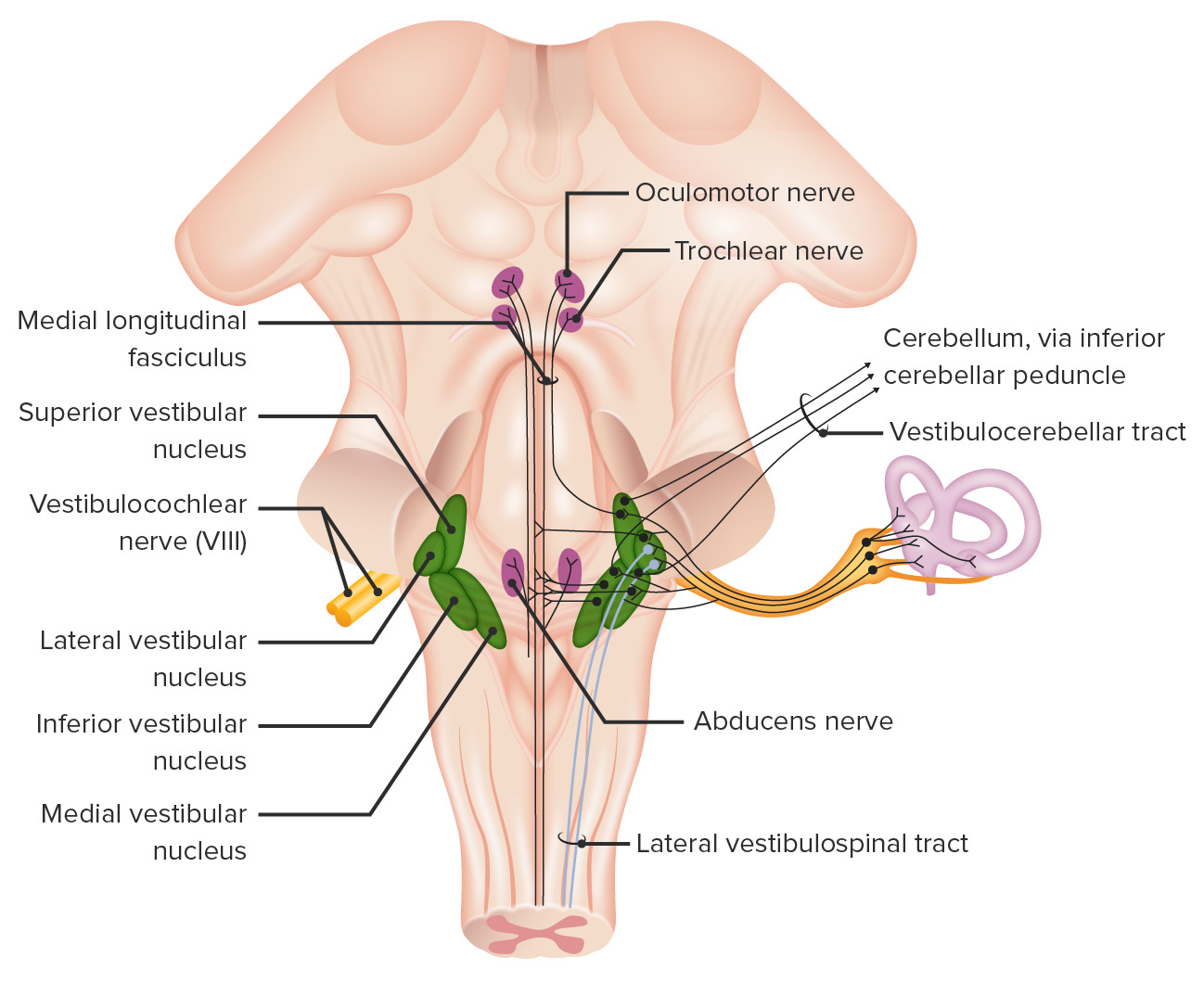Playlist
Show Playlist
Hide Playlist
Bony and Membranous Labyrinth
-
Slides Vestibular system.pdf
-
Reference List Histology.pdf
-
Download Lecture Overview
00:00 Here are two diagrams representing the structure of the inner ear. On the left-hand side, you have what we named, the bony labyrinth. It's the bony portion of the ear embedded in the temporal bone. Inside that bony labyrinth is going to be perilymph fluid. And I'll come back to that diagram in a moment. On the right-hand side, you have the membranous labyrinth. And that membranous labyrinth is filled with endolymph. 00:39 Now, what I want you to do is place that membranous labyrinth inside the bony labyrinths. 00:46 And that's exactly what the structure, the anatomical structure of the inner ear looks like. 00:53 Two components, the bony labyrinth filled with perilymph, and embedded in there, you have the membranous labyrinth filled with endolymph. Let's turn back to the bony labyrinth and let me point out a few anatomical components. First of all, you have the vestibule in the center. You can see the oval window and the round window. That vestibule contains the recess for the utricle and the saccule. The utricle and the saccule is one of the anatomical components of the inner ear that houses the receptors for movement of the head, linear movement of the head and the position of the head. They house the macula, and I'll talk about those later on in this lecture. On the left-hand side, you see the semicircular canals. They are at right angles to each other. There are three of them there. Those semicircular canals, as they approach the vestibule, have a dilated portion we call the ampulla. 02:14 It's in the ampulla that we have special structures called cristae. And those cristae house the receptors for turning the head, moving the head at an angle, and I'll talk about those also in this lecture. Now, the third anatomical component of the inner ear is the cochlea, shown here. The cochlea is a spiral-shaped organ. It spirals about two and three-quarter turns. And down the centre core of the spiral is a bone called the modiolus bone. And right in that bone is the spiral ganglia. The spiral ganglion houses the nerve cell bodies, the neurons, the bipolar neurons that are going to send fibres to the hair cells in the cochlea and transmit information back into the central nervous system that give us the sensation of sound. 03:26 This is another diagram to explain what I mentioned in the previous slide. In fact, this shows you the membranous labyrinth and just a little bit more detail that I'll briefly summarize here. Focus on label 1 there. That's the vestibule. It's a vestibule of the membranous labyrinth, which the membrane is enclosed or encloses endolymph. You can see the macula sacculi and the macula utriculi. And those two maculae contain sensory receptors for the position of the head and linear movement. Two there, labelled, shows you the semicircular canals, and a little illustration at the top, just reminding you that this membranous labyrinth is enclosed in the osseous labyrinth and surrounded by perilymph. 04:30 As I explained, each of those semicircular canals has a dilation called the ampulla. 04:35 And within each of those ampulla are the crista, crista ampullaris. They have their receptors that respond to the angular movement or tilting of the head. So there are three of these. 04:55 Three of these and two maculae, and then finally, the organ of Corti, the cochlea duct create the six sensory regions of the inner ear. The organ of Corti is going to be in the cochlea duct within the cochlea, and that's going to be responsible for sending sensations back to the central nervous system about sound.
About the Lecture
The lecture Bony and Membranous Labyrinth by Geoffrey Meyer, PhD is from the course Sensory Histology.
Included Quiz Questions
The bony labyrinth is located in which of the following cranial bones?
- Temporal bone
- Occipital bone
- Zygomatic bone
- Sphenoid bone
- Palatine bone
Which of the following fills the space between the bony labyrinth and the membranous labyrinth?
- Perilymph
- Endolymph
- Connective tissue
- Air
- Vacuum
The receptors for the rotational motion of the head are present in which of the following ear structures?
- Ampulla
- Middle ear
- Outer ear
- Cochlear duct
- Oval window
Approximately how many times does the cochlea turn around the modiolus?
- 2.75
- 2
- 1.50
- 4
- 3.25
Customer reviews
5,0 of 5 stars
| 5 Stars |
|
5 |
| 4 Stars |
|
0 |
| 3 Stars |
|
0 |
| 2 Stars |
|
0 |
| 1 Star |
|
0 |





